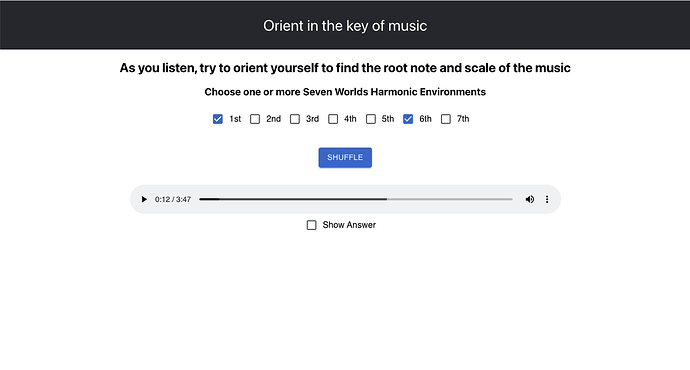Hi Angela,
Welcome to the forum! You can certainly practice that ability now, but it’s going to become much easier and more reliable as you gain experience practicing the other aspects of the method. One of the many advantages of doing all your thinking in tonal numbers is that it gives you a constant name for each musical sensation. For example, in Ear Training for Musical Creativity, you could talk about a sound like “note 3” and study its unique and beautiful sound, which is the same in any key.
But then as you saw in Recognizing Chords by Ear, the chords happening in the background also combine with melody notes to create a unique effect. So for example, “note 3 in the 1 chord” is a different overall sensation from “note 3 in the 4 chord”. It’s still note 3, and there is a part of the sound that doesn’t change. But the chords in the background definitely affect how these notes will feel to us.
And even in that situation that I’m describing from Recognizing Chords by Ear, we’re still feeling note 1 as the tonal center. Where things really start to sound different is when we’re feeling some other note as the tonal center. Toward the end of that workshop, you got to experience this yourself in comparing songs where we feel the 1 chord vs. the 6- chord as the tonal center.
The point of this long preamble is that each one of the musical situations I’m describing is something you need to experience for yourself before you’ll be able to recognize it by ear. So if you want to use what I call the “streamlined” version of Exercise 2: Mastery Level, you just need to be familiar with all of those sounds. This just means the 12 notes of the chromatic scale, in at least the two most important harmonic situations (major and minor) where you will be feeling either note 1 or note 6 as your tonal center.
The good news is that you don’t need to do anything special to develop this ability. It just comes down to the two things we’re always talking about: (1) listen deeply to every note you play, and (2) always do all your thinking in tonal numbers. If you just continue doing these two things, life itself will put you in all of the harmonic situations I’m describing, and over time you’ll become so familiar with them that you can recognize them instantly.
If you do want to practice this ability now, there’s no substitute for real life! Starting right now, I challenge you to simply adopt the new habit that you’re ALWAYS going to find the key of the music by ear whenever you play! You can certainly try this with other musicians but you can also practice this at home with the IFR Jam Tracks if you prefer to do it privately. With the jam tracks, there’s really nothing to lose because even if it takes you all day to find the key by ear, you’ll make many valuable discoveries through that process.
You could even add the discipline of playing just one single note on your instrument and then listening to it to decide for yourself where you must be in the key of the music. This is the skill that I think you’re saying you want to develop. So give it a try! There’s no harm in playing a single note and listening to it, just to see if you happen to recognize it already. If you don’t, then try a different note. Just don’t fall into the trap of playing hundreds of notes looking for the right ones. You’ll grow much faster if you pause to really listen to each note before giving up. But if you can’t recognize the first note you play, then by all means try a different one.
Whatever you decide your process will be, my advice is to start living the life you envision for yourself right now. Start thinking yourself as a person who always finds the key of the music by ear, and make this the way you start every improvisation. I think you’ll be surprised at how quickly you can get very comfortable doing this, just from a little practice. But as I say, you’re also going to get much better at this over time because you’ll have more experience in all of the different harmonic situations that I mentioned.
Thank you for the great question and for your enthusiasm. I’m happy you joined us here!
David

 …
…